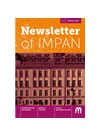Multi-normed spaces
Tom 488 / 2012
Streszczenie
We modify the very well known theory of normed spaces $\newcommand{\norm}{\Vert\cdot\Vert}(E, \norm)$ within functional analysis by considering a sequence $\newcommand{\norm}{\Vert\cdot\Vert}(\norm_n : n\in\mathbb N)$ of norms, where $\newcommand{\norm}{\Vert\cdot\Vert}\norm_n$ is defined on the product space $E^n$ for each $n\in\mathbb N$.
Our theory is analogous to, but distinct from, an existing theory of `operator spaces'; it is designed to relate to general spaces $L^p$ for $p\in [1,\infty]$, and in particular to $L^1$-spaces, rather than to $L^2$-spaces.
After recalling in Chapter 1 some results in functional analysis, especially in Banach space, Hilbert space, Banach algebra, and Banach lattice theory, that we shall use, we shall present in Chapter 2 our axiomatic definition of a `multi-normed space' $\newcommand{\norm}{\Vert\cdot\Vert}((E^n, \norm_n) : n\in \mathbb N)$, where $\newcommand{\norm}{\Vert\cdot\Vert}(E, \norm)$ is a normed space. Several different, equivalent, characterizations of multi-normed spaces are given, some involving the theory of tensor products; key examples of multi-norms are the minimum, maximum, and $(p,q)$-multi-norms based on a given space. Multi-norms measure `geometrical features' of normed spaces, in particular by considering their `rate of growth'. There is a strong connection between multi-normed spaces and the theory of absolutely summing operators.
A substantial number of examples of multi-norms will be presented.
Following the pattern of standard presentations of the foundations of functional analysis, we consider generalizations to `multi-topological linear spaces' through `multi-null sequences', and to `multi-bounded' linear operators, which are exactly the `multi-continuous' operators. We define a new Banach space ${\mathcal M}(E,F)$ of multi-bounded operators, and show that it generalizes well-known spaces, especially in the theory of Banach lattices.
We conclude with a theory of `orthogonal decompositions' of a normed space with respect to a multi-norm, and apply this to construct a `multi-dual' space.
Applications of this theory will be presented elsewhere.








